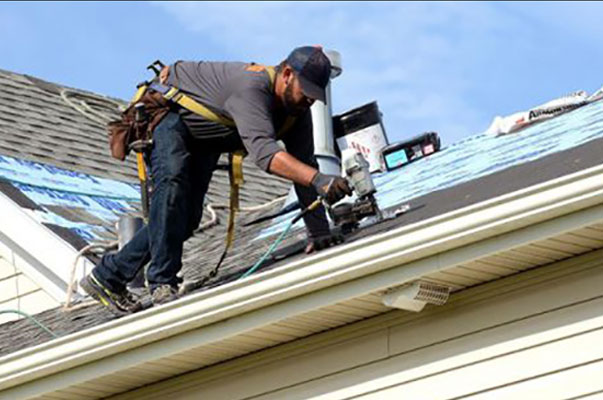Protecting Your Treasure Valley Home: Materials, Maintenance & Replacement
For any homeowner in Meridian, Idaho, a durable roof is the first line of defense against our distinct Treasure Valley climate. From scorching summer sun to cold winters with heavy snowfall, your roof works tirelessly to protect your family and your biggest investment. But it’s not something you can just set and forget. Understanding what your roof is made of, how to care for it, and when to call in the professionals is key to its longevity. As your local Meridian roofing experts, Team Construction believes an educated homeowner is an empowered one. This guide will walk you through the essentials of residential roofing, helping you make confident decisions for your home.
Choosing the Right Roofing Material for Idaho’s Climate
The material on your roof plays the biggest role in its performance and lifespan. Idaho’s weather, with its temperature swings, strong sun, and potential for hail and snow, demands durable materials. Here’s a look at the most common and effective residential roofing options for our area.
| Material | Average Lifespan (Idaho) | Key Benefits | Considerations |
|---|---|---|---|
| Asphalt Shingles | 15-30 Years | Affordable, wide variety of colors and styles, easy to repair. Architectural shingles are a popular, durable choice. | Can be susceptible to wind and hail damage; lifespan is shorter than other options. |
| Metal Roofing | 40-70 Years | Excellent durability, sheds snow easily, fire-resistant, and energy-efficient. | Higher upfront cost, can be noisy without proper insulation, repairs require specialized contractors. |
| Clay or Concrete Tiles | 50-75+ Years | Extremely durable, fire-resistant, provides excellent insulation. | Heavy material may require structural reinforcement; higher cost for materials and repairs. |
When to Repair vs. When to Replace Your Roof
One of the most common questions we hear is whether a roof needs a simple repair or a full replacement. The answer depends on the age of your roof and the extent of the damage. A professional roof inspection is the best way to get a clear answer, but here are some guidelines.
Signs You May Need a Roof Repair:
- A few missing or cracked shingles after a storm.
- Minor leaks around flashing, chimneys, or vents.
- Your roof is relatively new (under 15 years old) but has localized damage.
If you spot these issues, it is crucial to seek a roof repair promptly to prevent small problems from becoming large, expensive ones.
Signs You Likely Need a Full Roof Replacement:
- Your asphalt shingle roof is over 20-25 years old.
- Widespread curling, cracking, or bald spots on shingles.
- Finding excessive amounts of shingle granules in your gutters.
- A sagging roof deck, which indicates a serious structural issue.
- Multiple leaks or visible water stains on interior ceilings.
Did You Know?
Proper attic ventilation is crucial for your roof’s health in Idaho. It prevents heat buildup in the summer and moisture accumulation in the winter, which can lead to ice dams. These issues can drastically shorten your roof’s lifespan and increase energy costs.
The Importance of Regular Maintenance
Proactive maintenance is the best way to maximize your roof’s lifespan and avoid costly emergency repairs. Addressing small issues before they escalate protects your entire home from water damage, mold, and structural problems. Here are a few essential maintenance tips:
- 1. Clean Your Gutters: At least twice a year, clear leaves and debris from your gutters to ensure proper water drainage. Clogged gutters can cause water to back up under shingles, leading to rot.
- 2. Inspect After Storms: After any significant wind or hail event in Meridian, do a quick visual inspection from the ground. Look for missing shingles or other obvious signs of damage.
- 3. Trim Overhanging Trees: Keep tree branches trimmed away from your roof to prevent scraping and damage during high winds. Fallen branches are a common cause of roof damage.
- 4. Schedule Professional Inspections: A professional roofer can spot subtle signs of weakness or damage that are invisible to the untrained eye. An annual or biennial inspection is a smart investment.
Protect Your Meridian Home with Expert Roofing
Whether you need a minor repair, a full replacement, or assistance with a roof insurance claim after a storm, Team Construction is here to help. We are a locally owned and operated contractor dedicated to providing quality workmanship and lasting peace of mind to our neighbors in Meridian and across the Treasure Valley.
Frequently Asked Questions
How long does a new roof last in Meridian, ID?
The lifespan of a roof in our climate depends heavily on the material. Asphalt shingle roofs typically last 20-25 years, while a well-installed metal roof can last 40-70 years or more.
Which roofing material is best for handling heavy snow?
Metal roofing is generally considered the best for heavy snow because its smooth surface helps snow slide off easily, reducing the weight load and preventing ice dams.
Can I get my roof replaced in the winter?
While roofing is best done in milder weather, replacements can be performed in the winter. However, certain materials like asphalt shingles can be more brittle in the cold, requiring experienced installers. It’s best to address any urgent issues as soon as possible, regardless of the season.
How do I know if I have hail damage?
Hail damage on asphalt shingles often looks like dark bruises or dents where granules have been knocked off. On metal, it can cause dents. Since it can be difficult to spot from the ground, a professional inspection is the safest and most reliable way to assess for wind and hail damage.
